
Copernical Team
BWXT Delivers Fuel to NASA to Support Nuclear Thermal Propulsion
 BWX Technologies, Inc. has reached a critical milestone in the nation's pursuit of space nuclear propulsion by delivering coated reactor fuels to NASA in support of its space nuclear propulsion project within the agency's Space Technology Mission Directorate.
Nuclear Thermal Propulsion (NTP) is one of the technologies that is capable of propelling a spacecraft to Mars and back. Innovative
BWX Technologies, Inc. has reached a critical milestone in the nation's pursuit of space nuclear propulsion by delivering coated reactor fuels to NASA in support of its space nuclear propulsion project within the agency's Space Technology Mission Directorate.
Nuclear Thermal Propulsion (NTP) is one of the technologies that is capable of propelling a spacecraft to Mars and back. Innovative NASA selects second private astronaut mission to Space Station
 NASA has selected Axiom Space for the second private astronaut mission to the International Space Station. NASA will negotiate with Axiom on a mission order agreement for the Axiom Mission 2 (Ax-2) targeted to launch between fall 2022 and late spring 2023.
Ax-2 will launch from NASA's Kennedy Space Center in Florida for a mission of no more than 14 days docked to the space station. NASA an
NASA has selected Axiom Space for the second private astronaut mission to the International Space Station. NASA will negotiate with Axiom on a mission order agreement for the Axiom Mission 2 (Ax-2) targeted to launch between fall 2022 and late spring 2023.
Ax-2 will launch from NASA's Kennedy Space Center in Florida for a mission of no more than 14 days docked to the space station. NASA an Experiments riding 24th SpaceX cargo mission to space station study bioprinting, crystallization, laundry
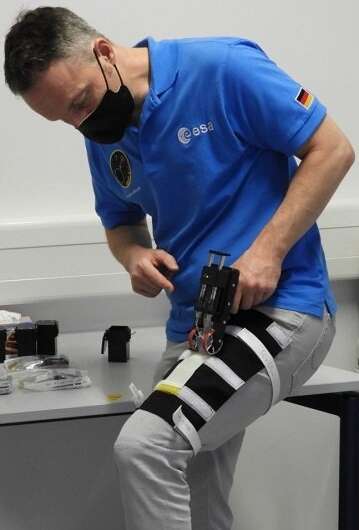
The 24th SpaceX cargo resupply services mission, targeted to launch in late December from NASA's Kennedy Space Center in Florida, carries scientific research and technology demonstrations to the International Space Station. The experiments aboard include studies of bioprinting, crystallization of monoclonal antibodies, changes in immune function, plant gene expression changes, laundering clothes in space, processing alloys, and student citizen science projects.
Learn more about these scientific experiments riding aboard the Dragon spacecraft to the orbiting lab:
Bioprinting bandages
Bioprinting, a subcategory of 3D printing, uses viable cells and biological molecules to print tissue structures. A study from the German Space Agency, Bioprint FirstAid, demonstrates a portable, handheld bioprinter that uses a patient's own skin cells to create a tissue-forming patch to cover a wound and accelerate the healing process.
NASA's Webb telescope will have the coolest camera in space
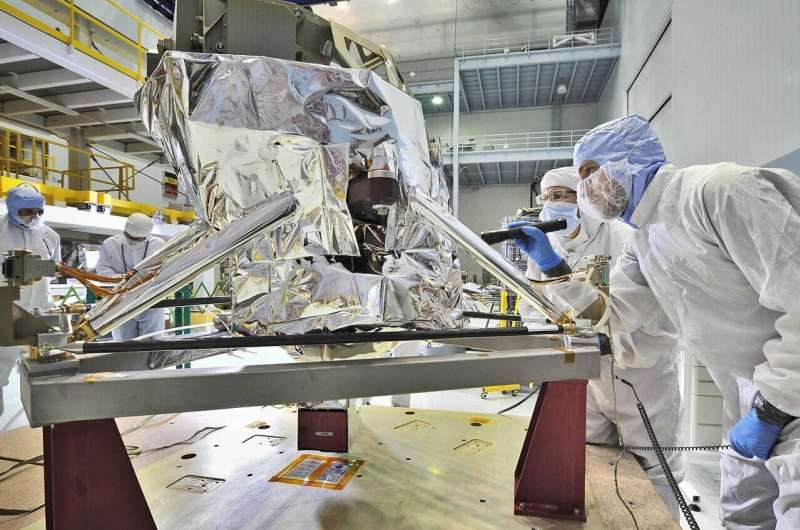
Set to launch on Dec. 22, NASA's James Webb Space Telescope is the largest space observatory in history, and it has an equally gargantuan task: to collect infrared light from the distant corners of the cosmos, enabling scientists to probe the structures and origins of our universe and our place in it.
Many cosmic objects – including stars and planets, as well as the gas and dust from where they form – emit infrared light, sometimes called heat radiation. But so do most other warm objects, like toasters, humans, and electronics. That means Webb's four infrared instruments can detect their own infrared glow.
Parker Solar Probe: A spacecraft has 'touched' the sun for the first time
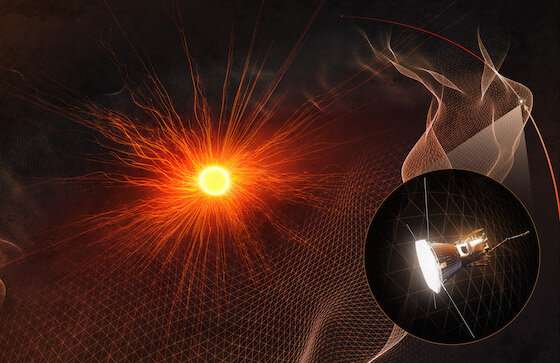
On April 28, 2021, at 0933 UT (3:33 a.m. Eastern Daylight Time), NASA's Parker Solar Probe reached the sun's extended solar atmosphere, known as the corona, and spent five hours there. The spacecraft is the first to enter the outer boundaries of our sun.
The results, published in Physical Review Letters, were announced in a press conference at the American Geophysical Union Fall Meeting 2021 on December 14. The manuscript is open-access and freely available to download.
"This marks the achievement of the primary objective of the Parker mission and a new era for understanding the physics of the corona," said Justin C. Kasper, the first author, Deputy Chief Technology Officer at BWX Technologies, and a professor at the University of Michigan. The mission is led by the Johns Hopkins University Applied Physics Laboratory (JHU/APL).
NASA enters the solar atmosphere for the first time, bringing new discoveries
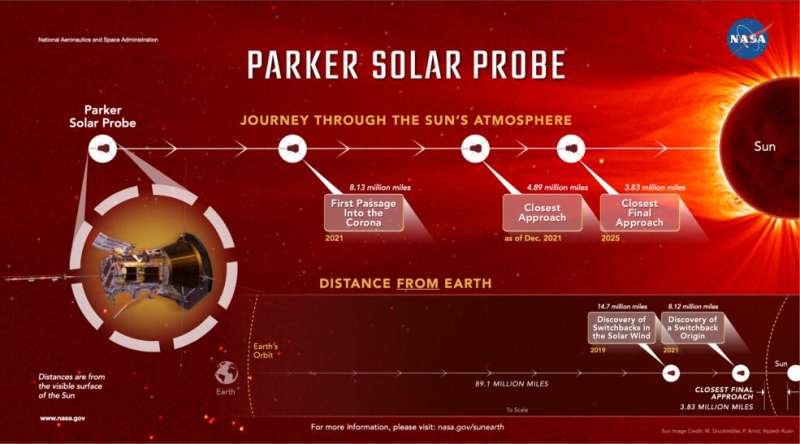
For the first time in history, a spacecraft has touched the Sun. NASA's Parker Solar Probe has now flown through the Sun's upper atmosphere—the corona—and sampled particles and magnetic fields there.
The new milestone marks one major step for Parker Solar Probe and one giant leap for solar science. Just as landing on the Moon allowed scientists to understand how it was formed, touching the very stuff the Sun is made of will help scientists uncover critical information about our closest star and its influence on the solar system.
Video: Double drop test success for ExoMars parachutes

The largest parachute set to fly on Mars has completed its first successful high-altitude drop test, a critical milestone for ensuring the ExoMars mission is on track for launch in 2022. Both the first and second stage parachutes have now successfully flown this year.
A pair of high-altitude drop tests took place in Oregon on 21 November and 3 December as part of the ongoing parachute testing to ensure the safe delivery of the ExoMars Rosalind Franklin rover and Kazachok lander to the surface of Mars in June 2023.
Locked in stone: Mars' missing water might be stored in clay mineral
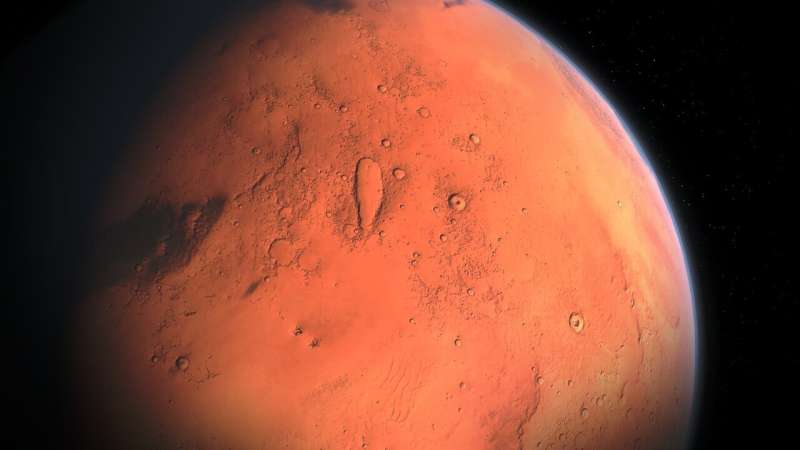
A clay mineral known as smectite could hold a substantial portion of the water missing from Mars, according to new research from Binghamton University, State University of New York.
Rivers and streams once flowed across the surface of Mars, etching channels still evident on the planet's surface today. Water in lakes once lapped ancient shores. But today, Mars' red sands appear bone-dry. Where did all that water go?
Some of that water is trapped in the planet's polar ice caps, which behave like stone due to Mars' frigid temperatures. The rest may have gone underground, locked inside clay minerals such as smectite.
New research from Binghamton University Geological Sciences and Environmental Studies Professor David Jenkins and former graduate student Brittany DePasquale provides information on how deep smectite could occur in the surface rocks of Mars. They found that iron-rich smectite, the least-stable form of smectite, can form to depths up to 30 km, much deeper than others might have predicted. In view of this rather robust stability for smectite, it appears that clay minerals are able to receive and store the missing water on Mars.
Aeolus paves the way for future wind lidars in space
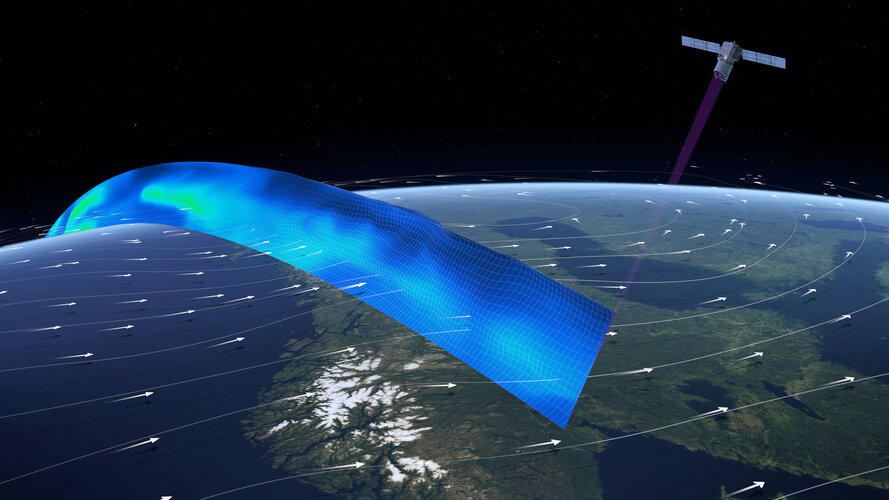
It’s hard to believe that ESA’s Aeolus wind mission has now been orbiting Earth for three years and, remarkably, exceeded its design life milestone. Aeolus has gone way further than its original goal of demonstrating that ground-breaking laser technology can deliver global profiles of the wind; its data are being distributed to weather forecasting services across the world in less than three hours of measurements being made in space. Moreover, Aeolus has laid the foundation for future Doppler wind lidar satellite missions.
Solar Orbiter publishes a wealth of science results from its cruise phase

For a mission yet to have entered its main science phase, Solar Orbiter has already generated a lot of great science. Today sees the publication of a wealth of results from the mission’s cruise phase.
